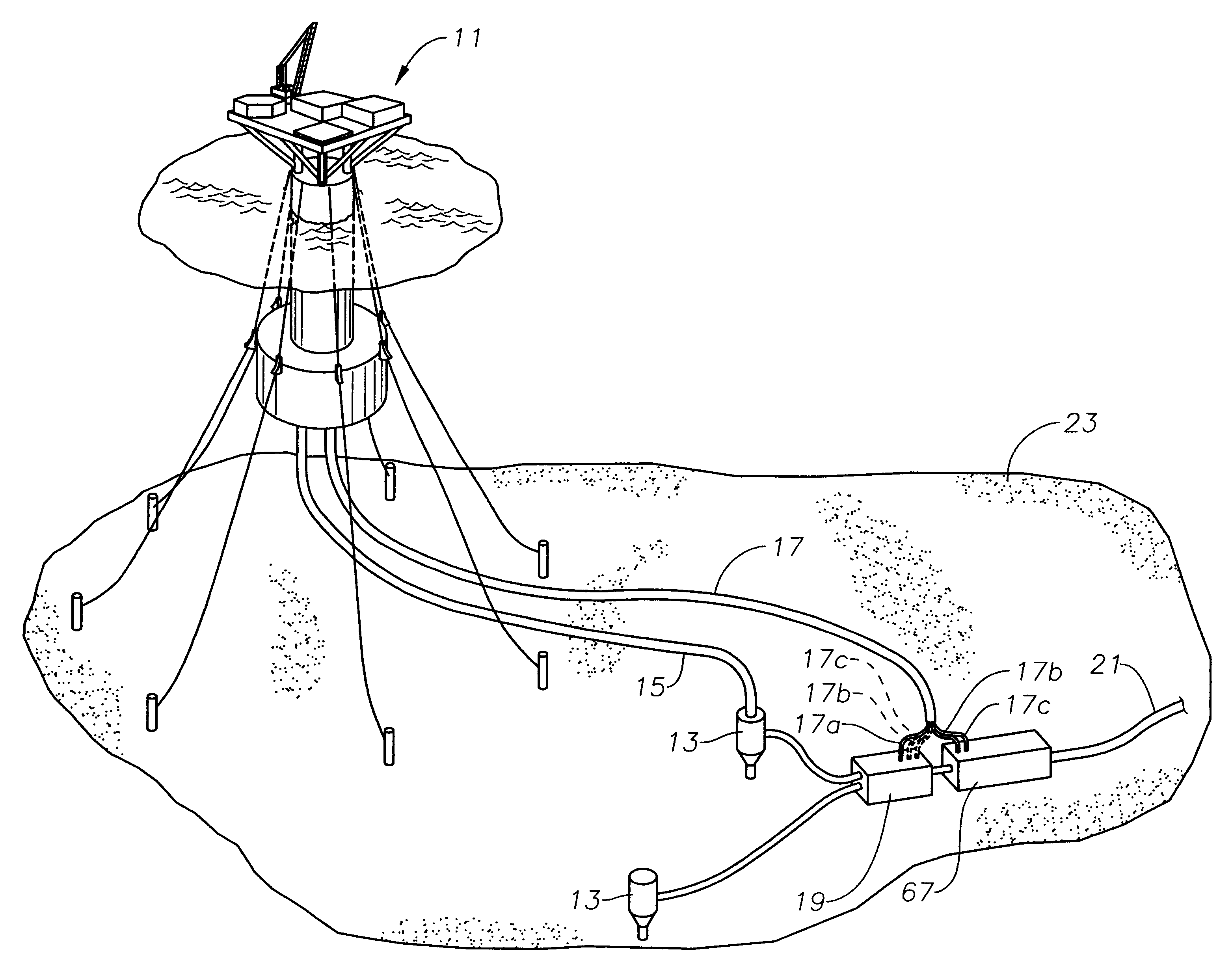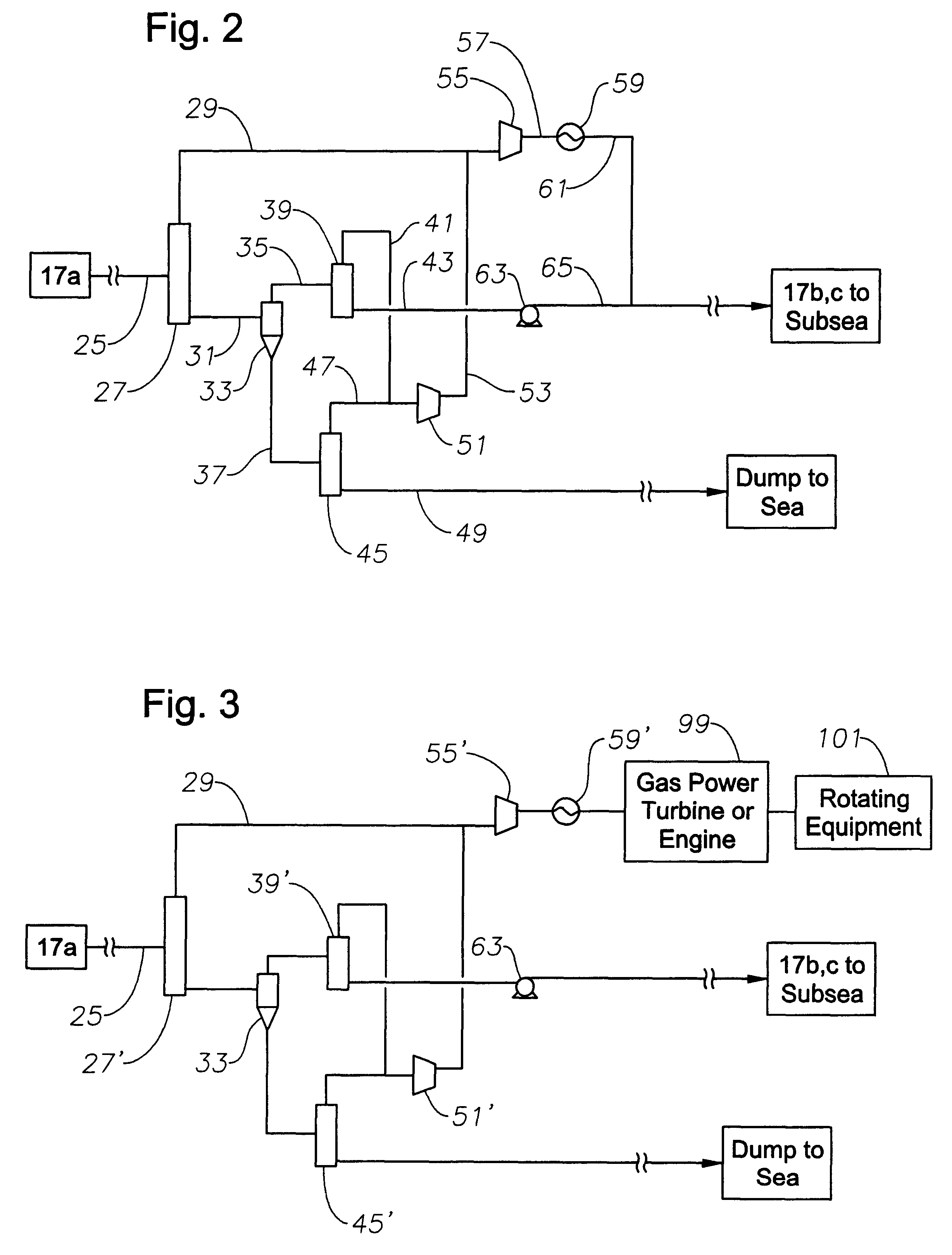Subsea well production facility
a production facility and subsea well technology, applied in the direction of sealing/packing, mixing, borehole/well accessories, etc., can solve the problems of increasing the energy requirements of the reservoir and the size of the pump, increasing the risk of hydrates, and increasing the demand for chemicals to control hydrates
- Summary
- Abstract
- Description
- Claims
- Application Information
AI Technical Summary
Benefits of technology
Problems solved by technology
Method used
Image
Examples
Embodiment Construction
Referring to FIG. 1, a floating vessel or buoy 11 for subsea wells connects to one or more subsea wellheads 13 of subsea wells by risers 15 and 17. Riser 15 is an optional riser capable of providing a passageway for intervention, communication, and control of the subsea well. In the preferred embodiment, buoy 11 is a floating production buoy, but those skilled in the relevant art will readily appreciate that buoy 11 could also be a tanker. Riser 17 is an optionally insulated and heated riser for the transportation of produced water from a subsea separator 19 to floating support buoy 11, and for the transportation of oil and gas from floating support buoy 11 to a production flow line 21 that runs along the ocean floor 23 to a production platform (not shown). Electricity for heating riser 17 is optionally generated by burning gas from subsea well that is conveyed to buoy 11 by riser 17. Riser 17 has at least two separate flow lines 17a and 17b.
Subsea separator 19 may be a free-water k...
PUM
 Login to View More
Login to View More Abstract
Description
Claims
Application Information
 Login to View More
Login to View More - R&D
- Intellectual Property
- Life Sciences
- Materials
- Tech Scout
- Unparalleled Data Quality
- Higher Quality Content
- 60% Fewer Hallucinations
Browse by: Latest US Patents, China's latest patents, Technical Efficacy Thesaurus, Application Domain, Technology Topic, Popular Technical Reports.
© 2025 PatSnap. All rights reserved.Legal|Privacy policy|Modern Slavery Act Transparency Statement|Sitemap|About US| Contact US: help@patsnap.com



